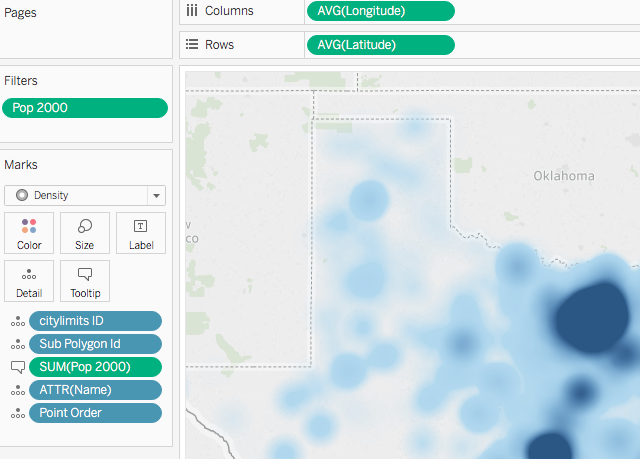I want to share a feature with you that was part of the Tableau 2018.3 release, and has been proven to be very useful when working with geographical data. It is the mark-type density with which you can create heatmaps. This new feature is not limited to maps; you can also use it for any other type of chart, however it is most efficient for dense data where patterns cannot be spotted easily.
Heatmaps
Example
The following steps will illustrate an example of creating a heatmap:
- Open the Citylimits tab in the workbook related to this chapter.
- Duplicate the worksheet and name it Density.
- Set the mark-type to density:

You can use the size slider for the density around the marks, you can choose different colors, and, on the...








































































